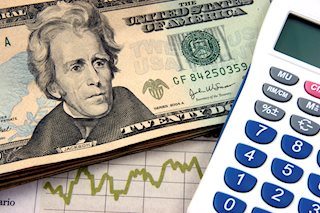US Dollar Index remains on the defensive below 104.50 amid rising rate cut bets, Fed’s dovish comments
|
- The US Dollar Index trades on a softer note near 104.20 in Wednesday’s Asian session.
- Rising bets on rate cuts and the Fed’s dovish stance might exert some selling on the DXY in the near term.
- The safe-haven flows are likely to cap the DXY’s downside.
The US Dollar Index (DXY) remains on the defensive around 104.20 on Wednesday during the Asian trading hours. The prospect of Federal Reserve (Fed) rate cuts as early as September weighs on the DXY despite better-than-expected US Retail sales data. Investors will keep an eye on the US Building Permits, Housing Starts, Industrial Production, and the Fed Beige Book on Wednesday, along with the speeches from the Fed Barkin and Waller.
The US June Retail Sales released on Tuesday did not alter significantly from the Fed rate cut expectations. Retail Sales in the United States remained flat at $704.3 billion in June, after a 0.3% increase (revised from 0.1%) in May and in line with market forecasts. Retail Sales ex Autos rose 0.4% MoM in June, above the projected 0.1%, according to the US Census Bureau.
Dovish bets on the Fed continue to undermine the DXY in the near term. Fed Chair Jerome Powell said on Monday that the US central bank has "more good" inflation data and it could pave the way for its first interest rate cut later this year. Meanwhile, Fed Governor Adriana Kugler said on Tuesday that inflation is on course to the Fed's 2% target, with goods, services and now housing contributing to easing price pressures. Financial markets are now pricing in 100% odds of a Fed rate cut in September, up from 70% a month ago, according to the CME FedWatch Tool.
Nonetheless, the political uncertainty and geopolitical risks globally might boost the safe-haven currency like the US Dollar and cap the downside. On Tuesday, two Israeli strikes killed more than 20 Palestinians in different regions of Gaza, one of which hit a United Nations school turned into a shelter, per the New York Times.
US Dollar FAQs
The US Dollar (USD) is the official currency of the United States of America, and the ‘de facto’ currency of a significant number of other countries where it is found in circulation alongside local notes. It is the most heavily traded currency in the world, accounting for over 88% of all global foreign exchange turnover, or an average of $6.6 trillion in transactions per day, according to data from 2022. Following the second world war, the USD took over from the British Pound as the world’s reserve currency. For most of its history, the US Dollar was backed by Gold, until the Bretton Woods Agreement in 1971 when the Gold Standard went away.
The most important single factor impacting on the value of the US Dollar is monetary policy, which is shaped by the Federal Reserve (Fed). The Fed has two mandates: to achieve price stability (control inflation) and foster full employment. Its primary tool to achieve these two goals is by adjusting interest rates. When prices are rising too quickly and inflation is above the Fed’s 2% target, the Fed will raise rates, which helps the USD value. When inflation falls below 2% or the Unemployment Rate is too high, the Fed may lower interest rates, which weighs on the Greenback.
In extreme situations, the Federal Reserve can also print more Dollars and enact quantitative easing (QE). QE is the process by which the Fed substantially increases the flow of credit in a stuck financial system. It is a non-standard policy measure used when credit has dried up because banks will not lend to each other (out of the fear of counterparty default). It is a last resort when simply lowering interest rates is unlikely to achieve the necessary result. It was the Fed’s weapon of choice to combat the credit crunch that occurred during the Great Financial Crisis in 2008. It involves the Fed printing more Dollars and using them to buy US government bonds predominantly from financial institutions. QE usually leads to a weaker US Dollar.
Quantitative tightening (QT) is the reverse process whereby the Federal Reserve stops buying bonds from financial institutions and does not reinvest the principal from the bonds it holds maturing in new purchases. It is usually positive for the US Dollar.
Information on these pages contains forward-looking statements that involve risks and uncertainties. Markets and instruments profiled on this page are for informational purposes only and should not in any way come across as a recommendation to buy or sell in these assets. You should do your own thorough research before making any investment decisions. FXStreet does not in any way guarantee that this information is free from mistakes, errors, or material misstatements. It also does not guarantee that this information is of a timely nature. Investing in Open Markets involves a great deal of risk, including the loss of all or a portion of your investment, as well as emotional distress. All risks, losses and costs associated with investing, including total loss of principal, are your responsibility. The views and opinions expressed in this article are those of the authors and do not necessarily reflect the official policy or position of FXStreet nor its advertisers.